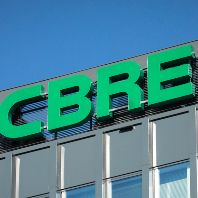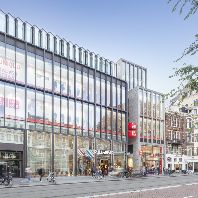DTZ, a UGL company just released the DTZ Money into Property 2013 Europe report revealing that invested stock increased by a marginal 3% in 2012. The growth came from the three major markets in Europe while the rest of the region posted a 1% decline. Growth was predominantly driven by increases in equity but public debt reversed its declining trend with a modest 1% growth over the year.
Nigel Almond, Head of Strategy Research at DTZ comments: “Overall the value of debt outstanding in 2012 fell marginally and despite deleveraging, overall bank debt held stable. In contrast, non-bank lenders realized growth as they picked up some of the slack from traditional banks. Non-bank lending provided by institution or debt funds increased 80% to €34 bln in 2012 from €19 bln in 2011.”
Nigel adds: “In their search for alternative sources of lending, a growing number of property companies have raised public debt through the issuance of corporate bonds, offsetting the maturing CMBS issuance. More than €15 bln has been raised in 2012 through corporate bonds. This represents a 70% increase over the year and is a record high since 2006.”
European lenders and investors in the DTZ survey remain wary. This is evidenced by the expectation of further delays in the timing of the lending market recovery. However, with markets returning to normal, it is encouraging that over three quarters of investors find access to new acquisition finance not an issue compared to just 61% last year. In addition, over half of lenders report that they have lent against both secondary assets and assets in tier two and three cities.
Despite the continued uncertainty in the Eurozone, total real estate investment volumes grew by 6% in 2012 with €118 bln invested, up from €112 bln recorded in 2011. Investors remained focused on core markets particularly, the UK, Germany and to some extent, France.
Magali Marton, Head of CEMEA Research and co-author of the report, comments: “ Analyzing 2012 capital flows, there were significant changes with cross-border investors. Inter-regional activity posted the biggest increase of 45% and accounted for nearly a quarter of the overall volumes.
"This highlights the capacity for a wider range of European countries to attract foreign capital originating from outside the region. US based investors, who were active previously on the European market, have been joined by a wide range of new players coming from Asia-Pacific and the Middle-East.”
The DTZ Fair Value Index™ score for Europe rose to 77 in Q1 2013 from 51 a year ago, meaning European commercial property is now most attractively priced since 2003. In addition, liquidity is gradually coming back to its long run 10-year average. But, Europe shows the highest inter-regional liquidity of all regions. Within Europe, the liquidity ratio shows a wide range of figures with Nordics (Sweden and Norway) on the top in 2012. Ranked in third position, the UK benefited from a strong cross border activity in 2012.
Hans Vrensen, Global Head of Research at DTZ comments: “New generations of Asian investors continue to emerge onto the European investment market. But, as risk aversion recedes further, many pan-European and American investors are also expected to return to a more active international diversification strategy in the coming years.
"For both new and returning investors in the markets, we think that apart from the currently abundant relative value, good liquidity is essential. If you cannot buy into and then later sell out of a market, relative value is immaterial. Based on this, we highlight core markets like the UK and Germany, but also non-core markets like Sweden and Poland as especially attractive to international investors.”
Source: College Hill














